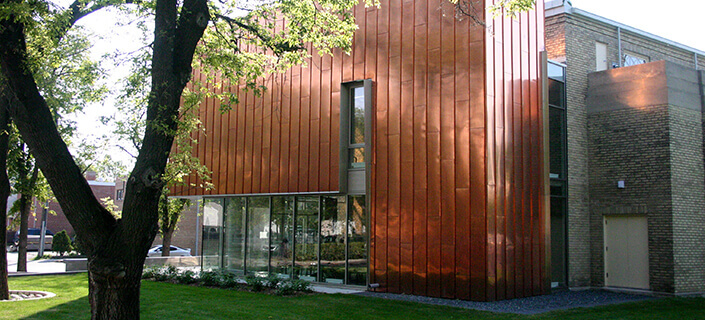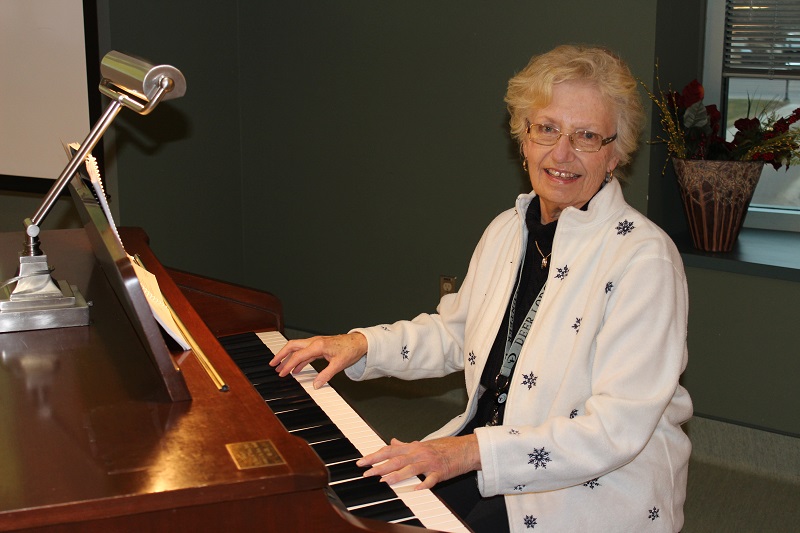
Occupational therapists construct a therapeutic approach for clients based on each individual’s particular needs and goals.
Occupational therapists are healthcare professionals dedicated to helping clients adapt to the challenges of everyday life
By Lindsay Mykes
Imagine a river. It flows down a mountain into a valley. Along the way, the river follows many different paths. The water runs over, around and between many rocks and boulders over the course of its journey. The current sometimes carries along the remains of fallen trees or other debris.
This river is a metaphor used by occupational therapists (OTs) to describe the experiences, challenges and obstacles a person encounters across the progression of a lifetime. An OT’s role in healthcare is to help a person adapt their tasks, or their environment, to their current abilities—especially when the client, because of illness, injury or aging, is challenged by the activities of everyday life. In other words, OTs help clients shift the river’s course to help it flow around an obstacle, or remove it completely.
The river metaphor, known as the Kawa model, is just one of the many philosophies that inform the whole-person approach to healthcare at the foundation of all occupational therapy practice. OTs do not set out to cure or fix what is broken, as other professionals often do in reactive, symptom-based care. Rather, they serve the whole person by helping clients achieve goals, improve quality of life, and access services that can help them.
“Meaning and purpose”
The first step to understanding the role of an occupational therapist within the tapestry of healthcare is to understand the profession’s definition of occupation:
“We define occupation as anything that people do in their lives that has meaning or purpose,” says Sheena Warkentin, the clinical service leader for occupational therapy a Deer Lodge Centre. OTs “help people by adapting tasks or retraining them to do the things they want to do, the things that are important to them.”
Occupations can be divided into tasks related to self-care, productivity and leisure. Every occupation is simultaneously under the influence of the person performing it, the environment they’re performing it in, and the occupation itself. OTs look at all three components and how they work together. To help a client achieve a challenging task, for instance, “we may work with the person by teaching them new skills. We may adjust the occupation, allowing the client to achieve the same outcome in a different way. Or we may modify the environment.”
It’s common for OTs working at Deer Lodge Centre to adapt the environment to the needs of residents and patients—by modifying the bathroom, for instance. “We might recommend bars and a raised seat on the toilet, so they can still use the bathroom independently.”
Deer Lodge residents often consult with occupational therapists to optimize their living space, or to learn a new technology, such as a tablet for communication or a motorized wheelchair for mobility.
Creative problem-solvers
Every OT’s practice is tightly tailored to the types of clients they serve, making the profession as a whole incredibly broad, varied, and frequently innovative.
At Deer Lodge Centre, occupational therapists serve a wide variety of in-patient programs and services, such as the geriatric rehab program and long-term care. Others serve outpatient programs such as the Day Hospital, and affiliated units such as the Movement Disorder Clinic and PRIME. At the Operational Stress Injuries Clinic, an OT works with military and law enforcement personnel and veterans dealing with mental health conditions such as post-traumatic stress disorder, anxiety, or depression.
“You could have six OTs all sitting in a room together and their jobs could be all completely different,” says Warkentin.
No matter what their focus, however, all OTs share a dedication to improving the lives of their clients through collaboration, innovation and creative problem-solving. For example, OTs at Deer Lodge collaborate with the pharmacy team to develop tools call med-kits, which are used to measure a client’s ability to follow dosing instructions and schedules, as well as their physical ability to open blister packs. In long-term care, residents participate in activities based on the Montessori approach. These activities engage the senses and establish a connection to previous memories and the associated positive emotions.
“Focusing on tasks such as sorting objects or photos, for example, can provide residents with opportunities to participate in meaningful occupations, decreasing behaviours such as the tendency to wander, and reducing anxiety.”
Deer Lodge’s OTs also connect clients with follow-up care when they’re ready to leave the hospital. Community programs such as Day Hospital, Community Stroke Care Services, or Priority Home provide support to clients transitioning from inpatient rehabilitation to their own homes.
Aging in place: Safe Living Manitoba
When it comes to OT services for the general public, there are plenty of options available in the community. OT services can help you (or a family member) regain function after a medical event such as a stroke, so that you can continue to live a full life. They can also provide valuable information and support for aging workers who wish to remain in the workforce, but need accommodations to their environment or their tasks in order to do so.
Private occupational therapy services are also available.
One example is Safe Living Manitoba, a program developed by Enabling Access Inc. owner and occupational therapist Marnie Courage. Safe Living Manitoba OTs help identify equipment, services, or home modifications necessary for a client to age in place or live independently with a disability. They also help homeowners make their home accessible and “visitable” to all members of their family and community. They can team up with other community services providers such as contractors, equipment vendors, and private and public home care to help residents implement those services.
By reducing risks, the program increases independence for clients and helps them live in their home and their community longer. The approach it takes is resolutely proactive. “Why wait for people to fall before we look at their environment, or assess their cognitive abilities?”
OTs are an especially good fit for this role because they’re skilled at with working with people with disabilities, says Courage. “We understand the course of disease, and we are able offer predictive input into what somebody might need in the future.”
Recent News

Embracing Hope: The Impact of DLC’s Movement Disorder Clinic

Winnipeg Jets Parkinson’s Disease Awareness Game!

